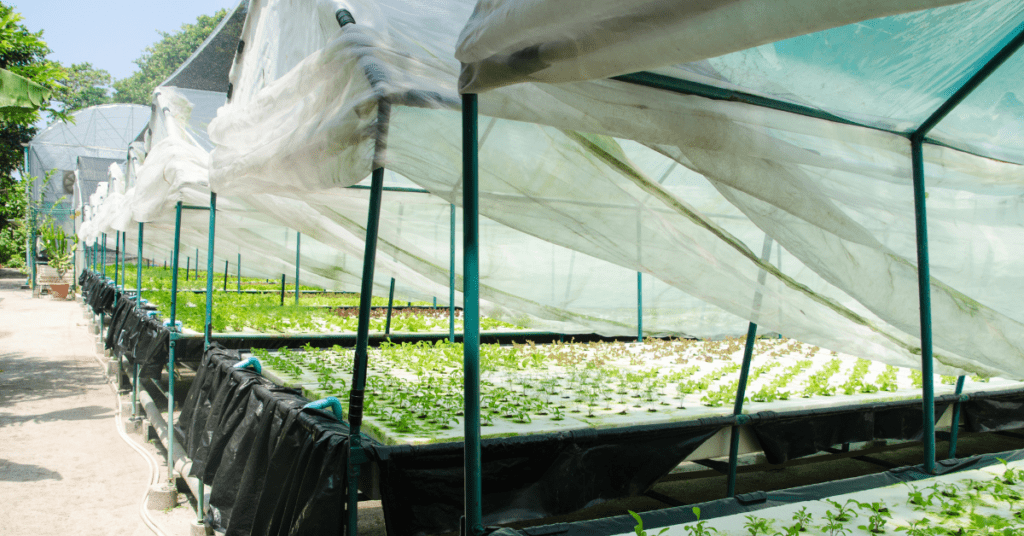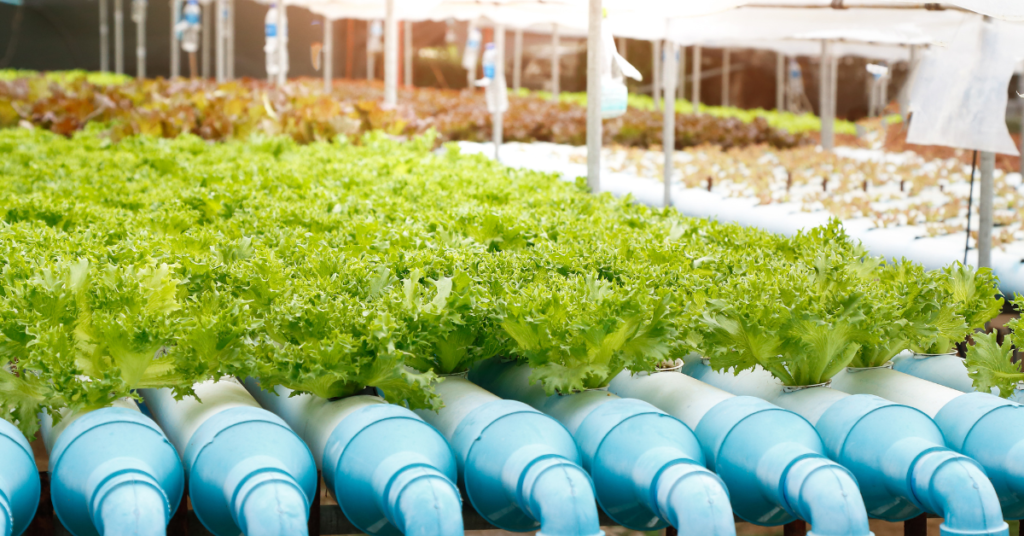If you’re looking for a new gardening challenge or a way to add some greenery to your home, consider creating your hydroponic garden.
Hydroponic gardening is a way of growing plants in water rather than soil, offering several benefits to novice and experienced gardeners.
This article will discuss the basics of hydroponic gardening, including what equipment you need, the types of plants that work best, and tips for setting up and maintaining your garden.
What is a Hydroponic Garden?
A hydroponic garden is an indoor garden where plants are grown in water instead of soil. The water is saturated with essential minerals and nutrients, allowing the plants to grow without using soil.
Hydroponic gardening is becoming an increasingly popular way for gardeners to grow plants indoors, as it is relatively easy to set up and maintain.
The main advantages of hydroponic gardening are that it is more efficient than traditional gardening and requires less water and fewer resources.
In a hydroponic garden, the plants are supported by a nutrient-rich solution circulated through the system.
It means that the plants get a constant supply of nutrients, which can lead to faster growth and bigger yields.
Additionally, hydroponic gardening eliminates the need to weed and water plants, as the water and nutrients are already supplied.
Benefits of Growing a Hydroponic Garden

In addition to being efficient and resource-saving, hydroponic gardening offers several other benefits.
One of the main advantages is that it allows gardeners to control the environment in which the plants are grown. For example, in a hydroponic system, the grower can control the temperature, humidity, and amount of light the plants receive. This means that plants can be grown in any environment, even in places that are too cold or hot for traditional gardening.
Another benefit of hydroponic gardening is that it can be used to grow plants in small spaces. Because hydroponic systems don’t require soil, they can be set up in any size; this makes it ideal for those who don’t have access to a large outdoor area or want to grow plants indoors.
Finally, hydroponic gardening is an eco-friendly option for those looking to reduce their environmental impact. Because hydroponic systems don’t require soil, they don’t deplete the soil of its nutrients, and they don’t need to be fertilized. Additionally, hydroponic gardens use less water than traditional gardens, so they can help conserve water.
Essential Equipment for a Hydroponic Garden

Before starting a hydroponic garden, you’ll have the right equipment. The leading equipment you’ll need for a hydroponic garden includes:
- A container to hold the water and nutrients: The container should be large enough to hold the plants you want to grow and the water and nutrient solution.
- An air pump: The air pump is used to aerate the nutrient solution, and the timer turns the air pump on and off.
- Nutrient solution: The nutrient solution is a mixture of essential minerals and nutrients the plants need to grow.
- Grow lights: Grow lights provide additional light to the plants.
- A timer for the grow lights to turn the lights on and off.
Choosing the Right Plants for your Hydroponic Garden
When choosing the right plants for your hydroponic garden, there are a few things to consider.
First, you’ll want to choose plants that are suitable for the environment you’re creating. For example, some plants are better suited for warmer temperatures, while others prefer cooler temperatures.
Additionally, you’ll want to choose plants compatible with your nutrient solution.
Some of the most popular plants for hydroponic gardens include lettuce, tomatoes, peppers, and herbs. These plants are easy to grow in a hydroponic system and require minimal maintenance.
Additionally, they can be harvested quickly, allowing you to enjoy your labor’s fruits (or vegetables) in no time.
Setting Up Your Hydroponic Garden
Once you have all of your equipment and plants, it’s time to set up your hydroponic garden.
First, fill the container with water and the nutrient solution.
Once the nutrient solution is added, you must add the air pump and timer to aerate the solution.
Then, you’ll need to add the grow lights and the timer for the lights.
Once the equipment is in place, you must add the plants to the container. Make sure to plant the plants according to the instructions on the seed packets.
You’ll also want to ensure the plants get enough light and the nutrient solution circulates correctly.
A Step-by-Step Guide to Creating a Hydroponic Garden
Creating a hydroponic garden doesn’t have to be complicated. Here’s a step-by-step guide to help you get started:
Gather the necessary equipment. You’ll need a container, air pump, timer, nutrient solution, grow lights, and timer for the lights.
Fill the container with water and the nutrient solution.
Add the air pump and timer to aerate the solution.
Add the grow lights and timer for the lights.
Plant the plants according to the instructions on the seed packets.
Ensure the plants get enough light and the nutrient solution circulates correctly.
Monitor the plants and make sure they are getting the nutrients they need.
Harvest the plants when they are ready.
Tips for Maintaining Your Hydroponic Garden
Once you’ve set up your hydroponic garden, you must maintain it to ensure your plants get the necessary nutrients. Here are some tips for keeping your hydroponic garden:
Make sure the nutrient solution is at the correct pH level. The pH level should be between 5.5 and 6.5.
Monitor the nutrient solution and add more if necessary.
Make sure the nutrient solution is circulating correctly.
Make sure the plants are getting enough light.
Prune the plants as needed.
Check the plants for pests and diseases and treat them as necessary.
Harvest the plants when they are ready.
Troubleshooting Common Problems in Hydroponic Gardening

Despite its many benefits, hydroponic gardening can be tricky at times. Here are some common problems and solutions for troubleshooting your hydroponic garden:
Check the nutrient solution if your plants are not growing as quickly as expected. Ensure the pH level is correct and enough nutrient solution is in the container.
If you are having trouble controlling the temperature, consider using a fan to cool the air around the plants.
If you’re having trouble with pests or diseases, check the plants regularly and treat them as necessary.
If the plants are not getting enough light, ensure the grow lights are set to the correct intensity and turn on and off at the right times.
Hydroponic Gardening Resources
Several resources are available if you want more information on hydroponic gardening. Here are some of the best resources for hydroponic gardening:
Hydroponic Gardening for Beginners: A Guide to Growing Plants Without Soil by John Stein
The Hydroponic Gardening Guide by Kelly Ormond
The Complete Guide to Hydroponic Gardening by David H. Gent
Hydroponic Gardening: A Guide to Growing Plants Without Soil by D.D. McLean
Hydroponic Gardening for Dummies by Larry Korn
Take Away Tips on Creating a Hydroponic Garden
Hydroponic gardening is a great way to grow plants indoors without needing soil. It is a more efficient and resource-saving option than traditional gardening, allowing the grower to control the environment where the plants are grown.
You can easily create a thriving hydroponic garden in your home with the right equipment and plants. With these tips and resources, you’ll be well on your way to creating a beautiful hydroponic garden in no time.
Have you tried hydroponic gardening before? What was your experience? Let us know in the comment section.

